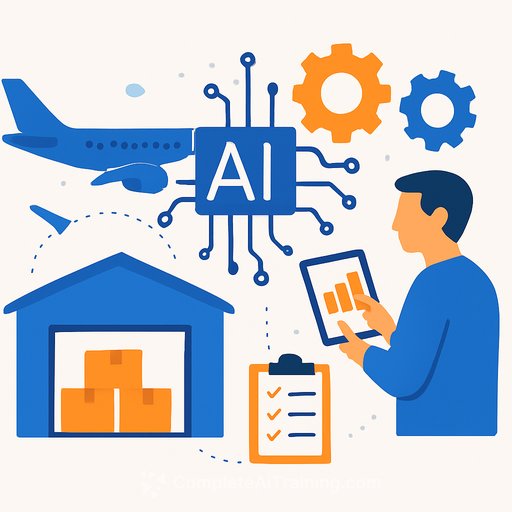Meta Cuts 600 Roles in AI Ops: What Operations Leaders Should Take Away
Meta has laid off about 600 employees from its AI division, largely in support and operational roles tied to AI infrastructure. Core research teams building next-generation models were spared, signaling a deliberate bet on R&D while tightening the rest of the machine.
Executives, including Alexandr Wang, told staff the reshuffle is meant to accelerate decision-making and reduce bureaucratic layers. Many affected employees may transition internally, but the message is clear: fewer handoffs, faster cycles, tighter spend.
Why this matters for Operations
- Speed vs. cost: Meta is trading operational headcount for decision velocity while doubling down on capex-heavy AI bets.
- Org design shift: Support functions are being compressed; high-leverage research and elite teams (like TBD Labs) are protected.
- Resource prioritization: Expect more money to flow into compute, data centers, and model training-and fewer people approving it.
Context you can't ignore
After a summer hiring push-poaching over 50 researchers from OpenAI and Google DeepMind-Meta is trimming redundancies elsewhere. Reports note the cuts don't touch the elite research pod, which reinforces a clear strategy: preserve the brains, streamline the scaffolding.
Mark Zuckerberg has been vocal about pursuing artificial general intelligence. The memo reportedly called out "bloated" structures. Translation for ops teams: fewer layers, smaller surface area, faster loops.
Operations Playbook: Move Fast Without Breaking Your Org
- Decision rights map: Reduce approval layers for infra changes, model deployments, and budget releases. One owner per decision.
- Span-and-layer audit: Collapse managerial layers where span is under 5-7; merge parallel support functions tied to the same AI pipeline.
- Capacity-to-value ratio: Track headcount per GPU cluster, per training run, and per product surface using the models.
- Backlog triage: Kill low-impact AI experiments early. Double the cadence of go/no-go checkpoints.
- Automation first: Systematize platform ops-scheduling, monitoring, cost governance-before hiring more coordinators.
- Internal mobility tracks: Ringfence critical knowledge; create 30-60 day reskilling paths from ops to MLOps, data reliability, or evals.
- Change comms cadence: Weekly updates on org shifts, metrics, and priorities. Ambiguity drains productivity.
- Vendor and capex guardrails: Pre-approve procurement tiers; tie spend to utilization thresholds and model performance milestones.
- Runbooks over heroics: Codify incident response for training failures, data drift, cost spikes, and degraded inference latency.
Metrics to Watch
- Time-to-decision: Request to approval to deployment.
- Infra utilization: GPU/TPU occupancy, queue times, and idle rates.
- Cost-to-serve per training run and per 1,000 inferences.
- Approval depth: Average number of layers per strategic decision.
- Internal mobility rate for impacted roles; 90-day retention post-transfer.
- Attrition risk among key SMEs and research-adjacent ops roles.
- Incident rate tied to model training/deployment and recovery time.
Risk Management
- Morale dip: Transparent comms and predictable review cycles matter. Pair cuts with visible investment in tools and automation.
- Knowledge drain: Map critical processes; assign owners; record tribal knowledge into SOPs before offboarding.
- Bottlenecks: Avoid overloading surviving managers-rebalance spans and use peer review instead of single-threaded approvals.
- Compliance drift: Tighten audit trails for data usage, model evaluation, and vendor access as you compress headcount.
Talent Strategy: Protect the Core
Meta's moves mirror Big Tech: preserve top research, streamline operations. Open-source momentum like Llama suggests a dual strategy-public ecosystem plus internal breakthroughs. If you're running AI at scale, keep elite R&D untouched and rebuild ops around them with lean, product-adjacent teams.
If you reference models like Llama, review the public resources for integration and governance standards. Meta's Llama page is a useful starting point for technical guidelines.
Budgeting Signal for 2025
Across the industry, companies including Amazon and Microsoft are restructuring around AI. This hints at a maturing phase where hype gives way to pragmatic scaling-more capex for compute, fewer layers in ops, and tighter ROI scrutiny.
For planning: lock scenarios for best/mid/worst case model performance and utilization. Tie headcount to throughput gains, not vague "AI initiatives."
If You're Reassigning Teams or Affected
- Map skills to MLOps, data engineering, evals, and reliability roles. Short sprints, not long courses.
- Use a 30-60-90 plan: shadow critical workflows, ship small automations, then own a lane.
- For structured upskilling by role, explore curated paths: AI courses by job.
Bottom Line
Meta is pruning AI operations to move faster while funneling resources into core research and infrastructure. It's a bet that fewer layers and bigger compute checks will beat slower, heavier orgs.
For operations leaders, the play is clear: compress decision paths, automate the repeatable, protect your researchers, and make spend follow measurable throughput. Speed without waste-anything else gets cut next.
Your membership also unlocks:






